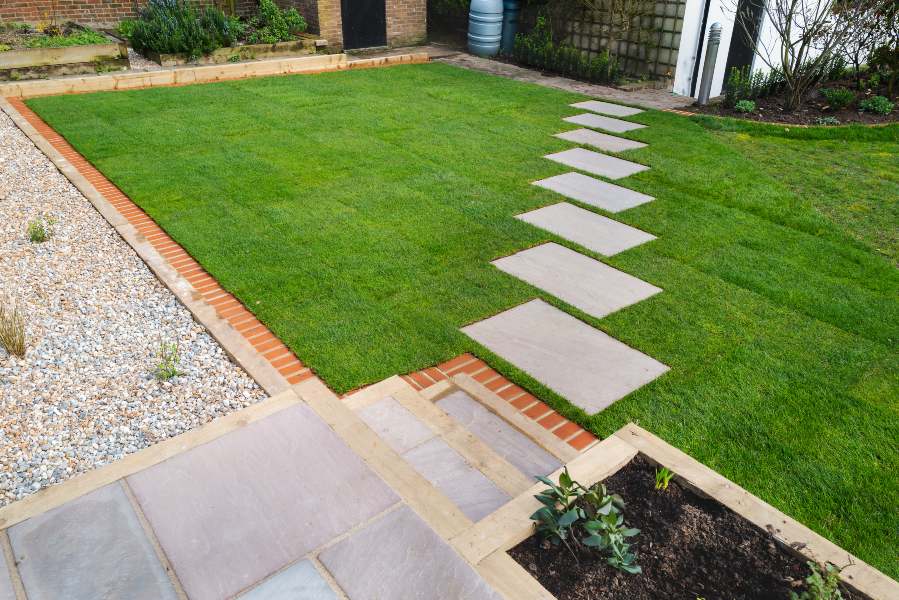Artificial Lawns in Urban Landscapes
Introduction

Urban landscapes are continually evolving to meet the demands of modern living. They offer less maintenance, more sustainability, and enhanced aesthetic appeal. Among the innovations sprouting in concrete jungles is the use of artificial lawns. Initially seen as a more sterile version of their natural counterparts, fake grasses, or synthetic turfs as we like to call them, have come a long way in terms of realism and functionality. In this article, we’ll discuss why artificial lawns are becoming a mainstay in urban settings.
Aesthetics and Visual Appeal
One of the foremost reasons homeowners and city planners are turning to artificial grass is the aesthetic value it brings. Unlike natural grass, which can become patchy and discolored, artificial lawns maintain a lush, green appearance year round. This visual uniformity adds a calming, natural element to the often hectic and cluttered urban spaces.
Low Maintenance, Higher Returns
Urban dwellers usually lead busy lives, leaving little time for the constant watering, mowing, and fertilizing required by natural lawns. Artificial turf provides an alternative that requires virtually no upkeep. Apart from the occasional cleaning, these lawns can remain vibrant and functional without ongoing care. This low maintenance aspect is particularly appealing for commercial properties, where reduced upkeep can translate to significant cost savings.
Space Optimization
In urban settings where space is at a premium, every square foot counts. Traditional grass can quickly become muddy or worn in high traffic areas, rendering it unusable for leisure activities. Artificial lawns, on the other hand, are designed to withstand heavy foot traffic, making them ideal for everything from small residential gardens to larger community parks.
Environmental Benefits
Artificial lawns offer certain environmental advantages. They don’t require watering, which is a crucial consideration in cities looking to conserve water. In addition, there’s no need for pesticides or fertilizers, which equates to less chemical runoff into local waterways. Since the turf never needs mowing, there’s no need for gas guzzling lawnmowers and the emissions they create.
Versatility and Multi-Use
Artificial lawns are remarkably versatile. From rooftop gardens to balcony spaces, and even indoor areas, synthetic grass can be installed virtually anywhere. Various types of artificial turf are more appropriate for specific needs, such as pet-friendly, child-friendly, or sports-grade versions.
Urban Farming and Community Gardens
Artificial grass can also play a role in urban farming initiatives and community gardens. While it’s not used for planting crops, it can serve as a low maintenance ground cover for pathways and recreational spaces within these urban agriculture zones.
Drainage and Safety
Modern artificial lawns come equipped with efficient drainage systems that can handle heavy rainfall, a useful feature in urban areas prone to flooding. Additionally, high quality synthetic turfs are made from materials that are safe for both pets and children.
Increased Property Value
Artificial lawns have been shown to increase property values. For city dwellers, a well maintained outdoor space can be a significant selling point. Investing in a high quality artificial lawn can thus offer an excellent return on investment when selling a property.
Legal and Zoning Considerations
Before installing artificial grass in an urban setting, it’s important to be aware of any bylaws or zoning regulations that may apply. Some cities have restrictions on the use of artificial turf, particularly in front yards or visible areas. Always consult with local authorities to ensure compliance with all relevant laws.
Conclusion
Artificial lawns are rapidly becoming a popular choice in urban landscapes for a multitude of reasons, from their low maintenance requirements to their versatility and aesthetic appeal. As technology continues to improve, we can expect these synthetic solutions to become even more indistinguishable from natural grass, further fueling their adoption in cities around the world. For urban planners and homeowners alike, artificial grass offers an efficient, attractive, and increasingly sustainable option for greening the concrete jungle.
Where to Go for Expert Advice
With over 20 years of experience, Las Vegas Artificial Lawns is the trusted artificial grass installer in the Las Vegas, North Las Vegas, Spring Valley, Paradise, and Henderson areas. Using the latest in technological advances, our expert team ensures a seamless process by assisting customers in selecting and installing the right system for their specific needs. Whether you are just in the process of planning or are ready to install a new lawn right away, the professionals here at Las Vegas Artificial Lawns want to help you create a luxurious new landscaped oasis!
If you’d like more information about the products and services we offer, contact us via our website, or give us a call us for a free design consultation at 702-389-7276.
